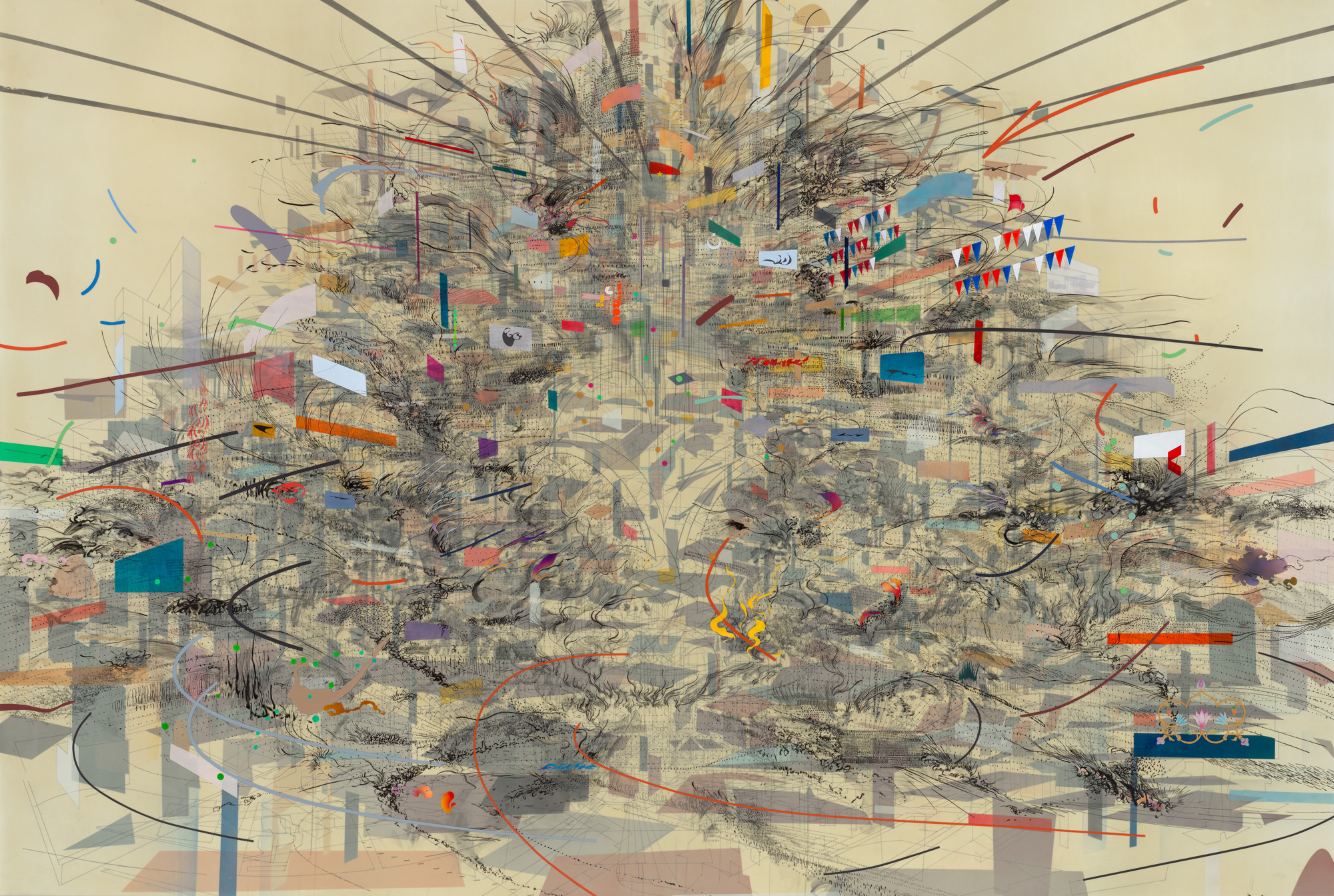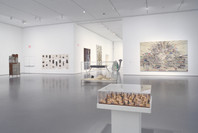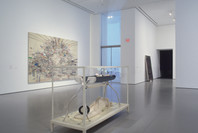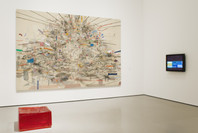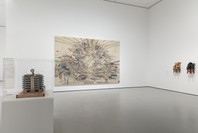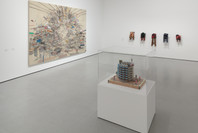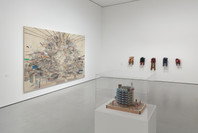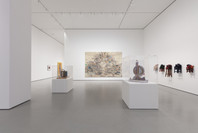The subject of this painting-drawing hybrid is Istanbul, a city perched on the border between Europe and Asia. The large scale of the work captures the epic dimension of the site, which was a capital of the Roman, Byzantine, and Ottoman empires. The sweeping scale is also crucial to the picture’s impact and reflects Mehretu’s interest in epic history painting and her aim to engage the viewer physically.
The Hagia Sophia—an Eastern Orthodox church converted first to a mosque, then to a museum—occupies the center of this frenzied metropolis. Around it Mehretu has articulated the texture of the city in both its globalized modernity and its specificity, which she reveals through symbols and other signifiers: the star and crescent, flags, and Islamic architectural and decorative motifs. Graphic shapes and expressive marks swarm and obscure these meticulously drawn details. The result is a portrait—or, better, a palimpsest—of a city, teeming with details and with ghostly traces, all layered within the thin sheets of acrylic Mehretu sprays onto the canvas, trapping space and time to create provocative metaphors for the creation of cities. “I think architecture reflects the machinations of politics,” the artist has reflected, “and that’s why I am interested in it as a metaphor for those institutions. I don’t think of architectural language as just a metaphor about space, but about spaces of power, about ideas of power.”
Publication excerpt from MoMA Highlights: 375 Works from The Museum of Modern Art, New York (New York: The Museum of Modern Art, 2019)
For Mehretu, abstraction "allows for thinking of an issue from different perspectives, from many points of view." "I work with source material that I am interested in conceptually, politically, or even just visually," she has explained. "I pull from all of this material, project it, trace it, break it up, recontextualize it, layer one on the other, and envelop it into the DNA of the painting. It then becomes the context, the history, the point of departure. It becomes the place of the painting."
Gallery label from Multiplex: Directions in Art, 1970 to Now, November 21, 2007-July 28, 2008.
The subject of this painting-drawing hybrid is Istanbul, a city perched on the border between Europe and Asia. The large scale of the work captures the epic dimension of the site, which was the capital of the Roman, Byzantine, and Ottoman empires. The Hagia Sophia—an Eastern Orthodox church converted to a mosque, then to a museum—occupies the quiet center of this frenzied metropolis.
Mehretu articulates the texture of Istanbul in both its globalized modernity and its specificity, which she reveals through markers like the star and crescent, flags, and Islamic architectural and decorative motifs. Istanbul appears jazzy, animated, and seductive, but also as a zone of danger. The bright rectangles of flashing signs and Mehretu’s obsessively proliferating abstract ink marks signal speed and the wild energy of a thriving organism or an apocalyptic bonfire. The mad profusion of chaotic information provides alarming signs of an out-of-control city in a state of emergency. Shuttling between inside and outside, past and present, chaos and order, and the local and the global, this work's viewers may experience a combination of exhilaration and fear—an urge to plunge into the action but also to withdraw from the madness and meditate on the collapse of a decaying, overstimulated civilization. It is in capturing the inner contradictions of Istanbul that Mehretu’s portrait approximates its model.
Publication excerpt from The Museum of Modern Art, MoMA Higlights since 1980, New York: The Museum of Modern Art, 2007, p. 203.
